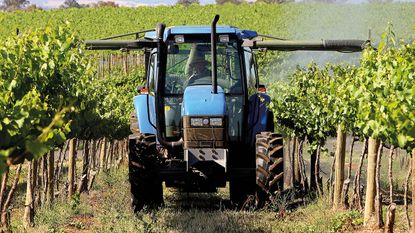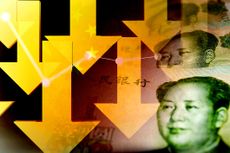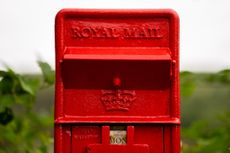Australia’s economy bounces back
Australia’s economy endured its first recession in 29 years in the first half of 2020. But things are now looking up.

Prolonged lockdowns, a trade war and the first recession in a generation have made 2020 an uncharacteristically gloomy year down under. Australia’s economy endured its first recession in 29 years in the first half. Yet things are looking up. A consumer-led rebound drove a 3.3% GDP gain in the third quarter, the biggest quarterly jump since 1976. Aggressive suppression of the virus and fiscal support mean that consumers’ sentiment is now at a ten-year high, says Swati Pandey for Reuters.
A worsening diplomatic and trade dispute has sparked debate about Australia’s economic dependence on China. Beijing has slapped tariffs and other restrictions on Australian wine, wheat, barley, beef and lobster exports among others this year. This week brought media reports that Australian coal imports are now being heavily restricted by China.
China needs iron ore
Over a third of Australian export dollars come from selling to China, note Rod Tyers and Yixiao Zhou on theconversation.com. While mineral exports make up just 1% of national income, they are an important economic foundation for local service industries and keep the Australian dollar strong. Tyers and Zhou estimate that a 95% reduction in Australia-China trade would lead to a 6% hit to GDP and a 14% reduction in real disposable income per capita as a weaker currency sent import prices soaring. For goods such as wine, coal and beef, Australia is selling into a “buyers’ market”, says Elizabeth Knight for The Sydney Morning Herald. China can switch international suppliers relatively easily. Yet there is one crucial exception: iron ore, which has conspicuously not been subject to Chinese trade restrictions. The steel-making ingredient is vital to the country’s infrastructure-led rebound, but supply problems in Brazil leave China with few other sources.
Subscribe to MoneyWeek
Subscribe to MoneyWeek today and get your first six magazine issues absolutely FREE

Sign up to Money Morning
Don't miss the latest investment and personal finances news, market analysis, plus money-saving tips with our free twice-daily newsletter
Don't miss the latest investment and personal finances news, market analysis, plus money-saving tips with our free twice-daily newsletter
Australia exports about A$80bn (£45bn)-worth of iron ore to China each year. The trade uncertainty has sent iron-ore prices soaring 60% over the past year, delivering a windfall to Australian miners and the taxman. That is “offsetting the economic punishment” that China is trying to “inflict on Australia” through tariffs.
The buoyant iron-ore price has helped send the Australian dollar up to a two-year high. The benchmark S&P/ASX 200 stockmarket index remains marginally down this year, but has rallied by 45% since March.
The index is heavily weighted towards commodities and bank stocks, with the latter enjoying strong gains of late on hopes of a vaccine-led rebound, says Shane Walton for ig.com. Macquarie Asset Management thinks the Aussie dollar has further room to rise as commodities enter a bull market. The bank also says local stocks should gain from a global upswing. If “vaccines work as claimed… ASX stocks could rise over 10% in 2021”.
-
 Adidas, Nike or Jordans - could collectable trainers make you rich?
Adidas, Nike or Jordans - could collectable trainers make you rich?The right pair of trainers can fetch six figures. Here's how you can start collecting vintage Adidas, Nike or Jordans now
By Chris Carter Published
-
 Early bird ISA investors flock to global funds, India and the US
Early bird ISA investors flock to global funds, India and the USThere’s been an increase in investors maxing out their ISA at the start of the new tax year. But where are they putting their cash and why does it make sense to be an early bird investor?
By Vaishali Varu Published
-
 Should your business invest in a VoIP phone service?
Should your business invest in a VoIP phone service?Here's what you need to know about VOIP (voice over IP) services before landlines go digital in 2025.
By David Prosser Published
-
 The end of China’s boom
The end of China’s boomLike the US, China too got fat on fake money. Now, China's doom is not far away.
By Bill Bonner Published
-
 What is the future of Royal Mail in the UK?
What is the future of Royal Mail in the UK?With fewer of us sending letters and parcels, the Royal Mail is finding dealing with the nation’s post is an increasingly unprofitable and costly business.
By Simon Wilson Published
-
 What's the secret of Manolo Blahnik's success?
What's the secret of Manolo Blahnik's success?Fashion maestro Manolo Blahnik shows little sign of slowing down at 81, and his company notched up a record financial year in 2022. What is the secret of his success?
By Jane Lewis Published
-
 Michelle Mone's "tough year of pain"
Michelle Mone's "tough year of pain"Michelle Mone liked to portray herself as a working-class heroine who worked her way to the top through grit and determination. But her pedestal is built on sand.
By Jane Lewis Published
-
 Trevor Milton, the Elon Musk wannabe, is jailed for fraud
Trevor Milton, the Elon Musk wannabe, is jailed for fraudThe former CEO of Nikola, Trevor Milton, has been found guilty of lying about the development of the company's electric trucks.
By Jane Lewis Published
-
 Directors should think twice before waiving limited liability
Directors should think twice before waiving limited liabilityShould small-business directors ever provide a personal guarantee in return for bank finance?
By David Prosser Published
-
 Why Russia's economy is doing better than predicted
Why Russia's economy is doing better than predictedSanctions were supposed to strangle Russia’s economy, but it seems to be thriving. What’s going on?
By Simon Wilson Published